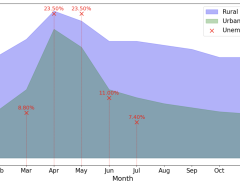PhysiQuant
Elevator Pitch: PhysiQuant revolutionizes predictive analytics by merging scientific machine learning with uncertainty quantification, offering unparalleled accuracy in projections while detailing potential risks. Our solution bridges the gap between theoretical models and practical applications, empowering industries to make informed decisions based on comprehensive, realistic simulations.
Concept
Integrating Scientific Machine Learning with Uncertainty Quantification for Predictive Analytics in Engineering and Sciences
Objective
To provide industries with a reliable predictive analytics tool capable of incorporating physical laws and constraints to ensure accurate, realistic projections while quantifying uncertainties in the predictions.
Solution
Utilize a novel physics-constrained polynomial chaos expansion method for surrogate modeling, integrating SciML and UQ for enhanced predictive modeling in complex systems.
Revenue Model
Subscription-based for access to the software suite, with tiered pricing depending on usage volume and the level of complexity required. Consulting services for custom model development.
Target Market
Engineering firms, research institutions, environmental agencies, and any businesses relying on complex physical systems for product development, such as aerospace, automotive, and energy industries.
Expansion Plan
Initially focus on specific industries with high demand for predictive modeling and uncertainty quantification, then expand to cover more sectors and potentially develop industry-specific versions.
Potential Challenges
High development costs for advanced algorithms, potential difficulty in convincing traditional industries to adopt new technology, and the need for ongoing support and updates.
Customer Problem
Lack of reliable predictive analytics tools that can incorporate physical constraints for accurate predictions and effectively quantify uncertainties in complex systems.
Regulatory and Ethical Issues
Adhering to data privacy and usage regulations, especially in industries with stringent compliance requirements. Ethical use of predictive models, ensuring they do not inadvertently cause harm.
Disruptiveness
Offers a significant improvement over existing predictive analytics tools by integrating physical laws directly into the modeling process, providing more reliable and actionable insights.
Check out our related research summary: here.



Leave a Reply